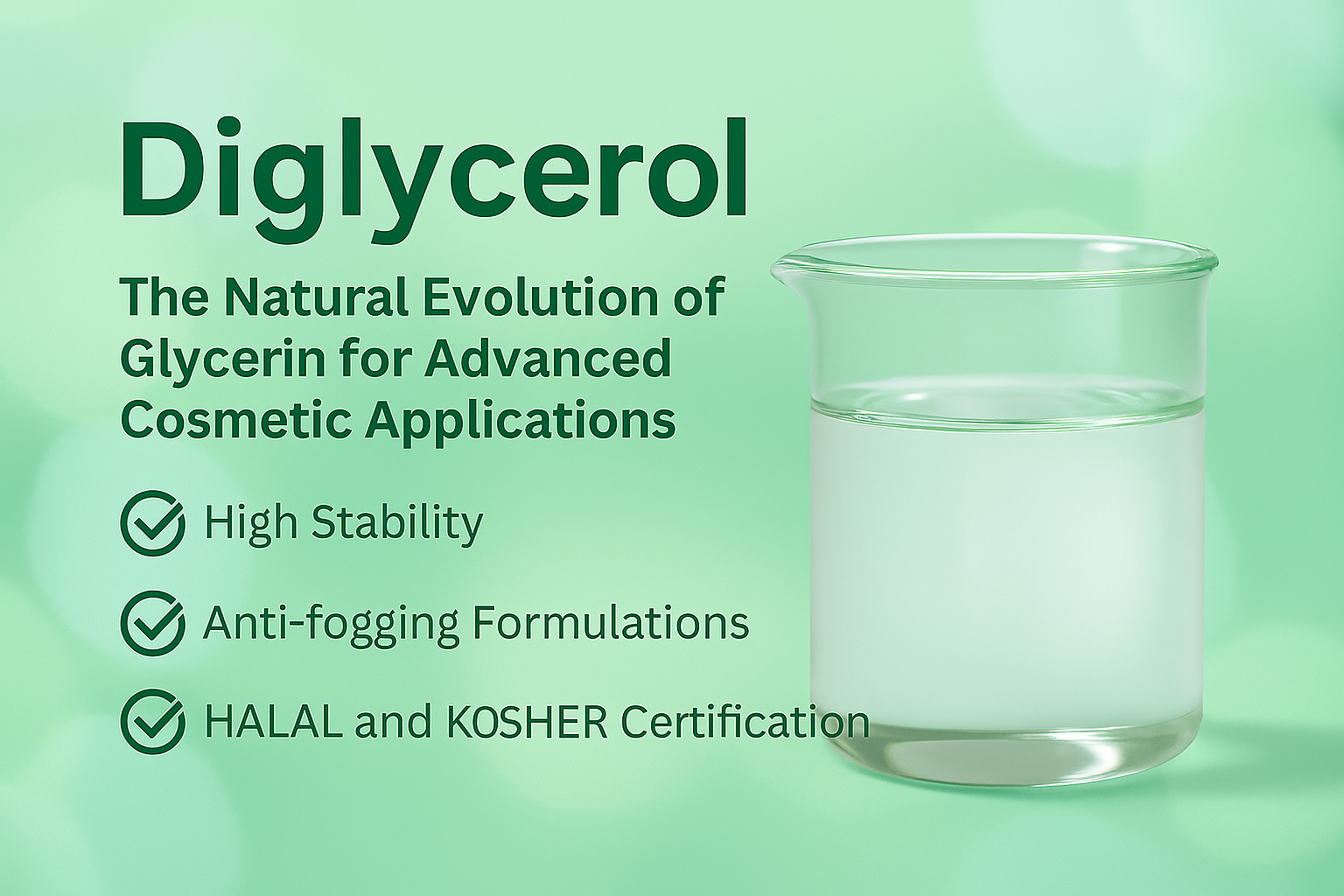@ Diglycerol
Natural-origin diglycerol is gaining ground as a functional and versatile alternative to traditional vegetable glycerin, especially in niche markets focused on high-value formulations such as polyglycerol esters.
Derived from the same plant base, this ingredient develops properties that make it more effective in areas where specific performance, higher tolerability and chemical-physical stability are required.
🔬 What is diglycerol, and how is it different from glycerin?
Diglycerol is obtained by the condensation of two glycerin molecules, maintaining the exact natural origin but gaining distinct properties. Structurally, this evolution provides greater molecular robustness, making it more suitable for complex technical formulations.
Compared to traditional glycerin, diglycerol:
- 📉 is less hygroscopic, so it absorbs less moisture from the environment
- 💧 has higher viscosity, which is helpful in denser and more controlled systems
- 🔥 does not evaporate easily, maintaining its function even at high temperatures
- ⚗️ resists acidic conditions, making it stable across a broader pH range
These benefits enable broader compatibility with complex matrices, technical emulsions, and reactive environments, expanding its application potential.
🏭 Industrial applications of diglycerol: beyond cosmetic labs
Beyond the cosmetic sector, diglycerol is also valued in technical formulations where features like thermal stability, controlled behaviour under mechanical stress, and low volatile residues are required.
Some established applications include:
⚙️ Technical Fluids
- Bio-based lubricants for delicate components
- Drilling fluids and hydraulic blends
📦 Advanced Packaging and Materials
- Anti-fogging additives for transparent surfaces
- Antistatic agents for sensitive films and packaging
- Viscosity modifiers for coatings
🧪 Industrial Chemistry
- Synthesis of diglycerol esters for cosmetic and technical uses
- Production of food additive E475 (Polyglycerol Esters of Fatty Acids)
- Components of non-ionic surfactants for detergents
Its use in these sectors is facilitated by the excellent rheological versatility of diglycerol and its tolerance to intensive processing conditions.
🌱 Diglycerol: an ingredient with added value
Beyond its technical properties, the diglycerol offered by Spiga Nord complies with the highest quality and safety standards, making it suitable for use in regulated industries. Available certifications include:
- ✅ HALAL
- ✅ KOSHER
- ✅ GMO Free
- ✅ ECOCERT and COSMOS (for natural and organic cosmetics)
In addition, the product complies with:
- Regulation (EU) 2023/1329 for food additives
- Regulation 1223/2009 for cosmetic products
- REACH registration no. 01-2119941694-30-0001
- FDA 21 CFR 172.854 for food use in the USA
More details are available in the company profile and core business section.
📄 Downloadable technical data sheet
All analytical data and updated technical specifications for Spiga Nord’s pure vegetable diglycerol are available on the product page:
👉 Diglycerol – Pure Vegetable

